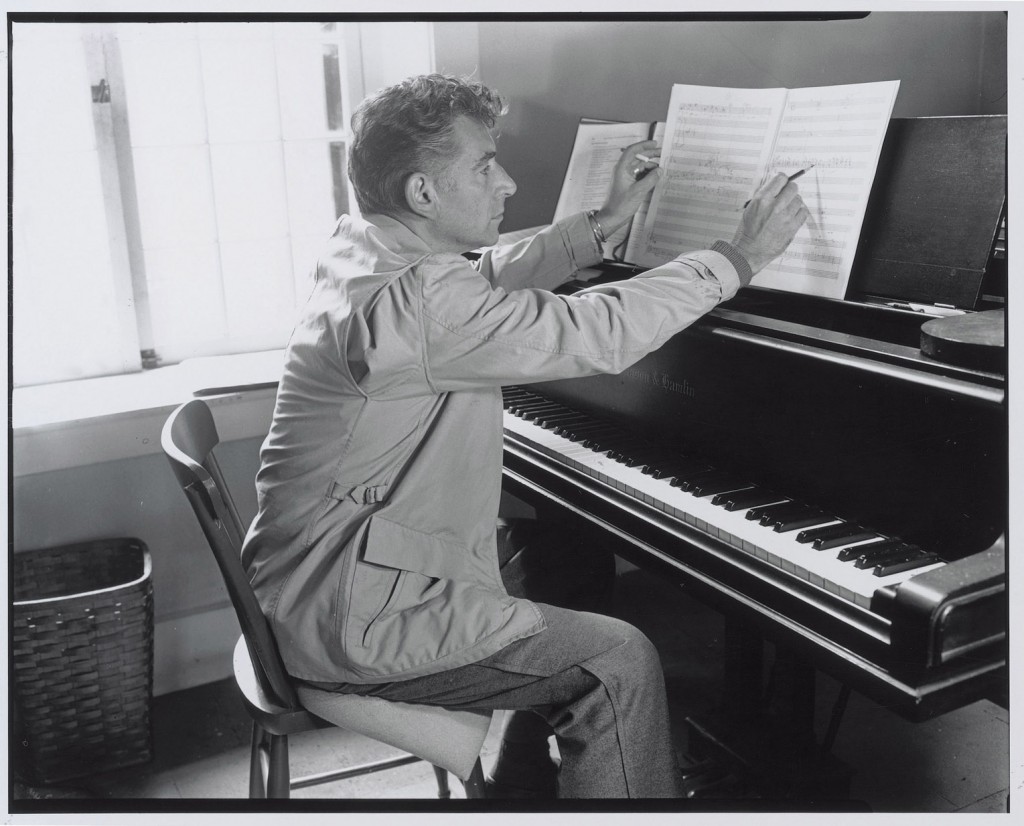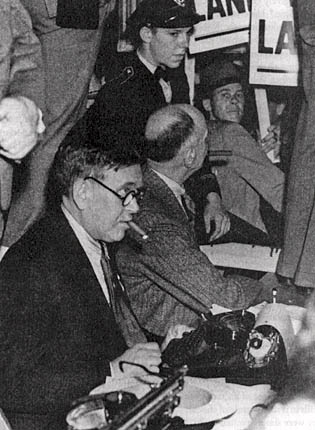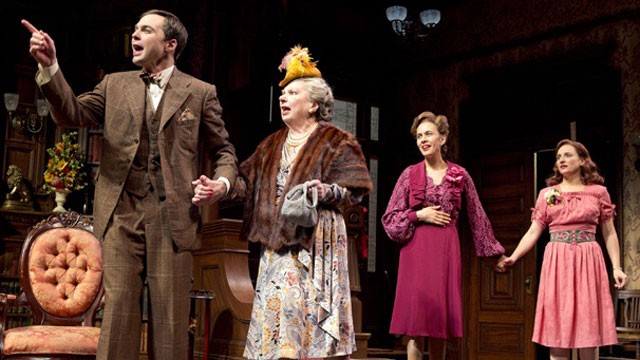Morning Paper, a 1942 British Council documentary film about how the Times of London was published during the Blitz:
(This is the latest in a series of arts-related videos that appear in this space each Monday and Wednesday.)
Archives for June 2012
TT: Almanac
“All work, even cotton-spinning, is noble; work is alone noble.”
Thomas Carlyle, Past and Present
TT: Lookback
 From 2004:
From 2004:
Instead of acting in boulevard comedies, playing jazz in nightclubs, dancing pas de deux with sylph-like women, or tossing off John Marin-like watercolors with a dazzling twist of the wrist, I write appreciatively of those who do. I can’t imagine anything more delightful than to write a profile of a little-known artist that makes him better known, and I know from experience that my abilities in this line of work are cherished by those who’ve been on the receiving end of them.
So no, I’m not frustrated–I’m fulfilled. I know exactly how lucky I am. I adore my work. And would I give it up in a heartbeat in order to be able to dance like Fred Astaire, or play piano like Count Basie? Please don’t embarrass me by asking….
Read the whole thing here.
TT: Almanac
“The moment a man can really do his work he becomes speechless about it. All words become idle to him, all theories.”
John Ruskin, Sesame and Lilies
TT: Into the woods
A year ago I delivered a commencement address in which I gave my listeners a piece of unsolicited advice:
The world is full to the brim of unprofessional people, many of whom are very smart and a few of whom are geniuses. You’ve known folks like that, folks who are always saying incredibly clever things off the top of their head, and I bet that sometimes they’ve made you feel small and inadequate. But here’s the secret of life. If you’re professional and they’re not–if you show up on time every morning and get the job done and they show up two hours later and start spouting clever excuses for being late the second they walk through the door–then nine times out of ten, you will win and they will lose.
 Leonard Bernstein knew what I was talking about. “I’m extremely humble about whatever gifts I may have, but I am not modest about the work I do,” he said in a 1959 interview. “I work extremely hard and all the time.” That’s how I feel about myself. Having met a few geniuses, I know quite well that I’m not one: I’m bright enough, and I’ve been blessed with a retentive memory, but that’s as far as it goes. What I do have in hyperabundance is what the Germans, who’ve coined an ugly-sounding word for just about everything, call Sitzfleisch, by which they mean the ability to sit at your desk for long stretches of time.
Leonard Bernstein knew what I was talking about. “I’m extremely humble about whatever gifts I may have, but I am not modest about the work I do,” he said in a 1959 interview. “I work extremely hard and all the time.” That’s how I feel about myself. Having met a few geniuses, I know quite well that I’m not one: I’m bright enough, and I’ve been blessed with a retentive memory, but that’s as far as it goes. What I do have in hyperabundance is what the Germans, who’ve coined an ugly-sounding word for just about everything, call Sitzfleisch, by which they mean the ability to sit at your desk for long stretches of time.
Anthony Trollope is supposed to have said that the three pieces of equipment needed by a writer are “pen and ink and a piece of sealing wax.” Asked what the sealing wax was for, he replied, “To put on the chair, my dear, to keep you at your work.” Whether or not this quote is apocryphal–and I have yet to find a primary source for it–I live by it. While I wouldn’t exactly say that genius is overrated, I do think that it’s not much more than the enabling condition for a certain kind of achievement. Without Sitzfleisch, it’s wasted.
Such, at any rate, is my belief, and I’m about to put it to the test. Mrs. T and I spent the night in Peterborough, New Hampshire, and later today she’ll drop me off at the MacDowell Colony, where I’ll be spending the next five weeks working on my Duke Ellington biography. I won’t be seeing any shows during that time. I’m taking two weeks off from The Wall Street Journal, and I’ve already filed reviews to cover the remainder of my stay in Peterborough, as well as enough almanac entries and videos to keep the blog warm. Between now and July 23, when I return to the world, I expect to be totally occupied with Mood Indigo.
The MacDowell Colony is well suited to total preoccupation with the task at hand, whatever it may be. I’ve been assigned to the Baetz Studio, one of thirty-two private hideaways in the woods. Each morning I’ll get up, eat breakfast, walk to my studio, shut the door, and start writing, or at least thinking. Each studio has a desk, a day bed, and a bathroom, and a picnic basket containing lunch will be silently placed on my doorstep at midday. What the MacDowell studios don’t have is wi-fi. Whenever I leave the main building, I’ll be pulling the plug on the outside world.
 It would be impossible to exaggerate the importance of this self-imposed isolation. I took a few months off in the summer of 2001 to finish The Skeptic, my biography of H.L. Mencken. Not since then have I taken anything remotely approaching a sabbatical. Every word of All in the Dances, Pops, Satchmo at the Waldorf, and my libretti for The Letter and Danse Russe, as well as a fair number of miscellaneous magazine and newspaper pieces, was written in such time as I had left over from my work as the drama critic of The Wall Street Journal and the critic-at-large of Commentary. No, it’s not ditch digging, but it keeps me busy, so much so that I quite literally can’t imagine what it would be like to have nothing to do but work on a book. Now I’m going to find out.
It would be impossible to exaggerate the importance of this self-imposed isolation. I took a few months off in the summer of 2001 to finish The Skeptic, my biography of H.L. Mencken. Not since then have I taken anything remotely approaching a sabbatical. Every word of All in the Dances, Pops, Satchmo at the Waldorf, and my libretti for The Letter and Danse Russe, as well as a fair number of miscellaneous magazine and newspaper pieces, was written in such time as I had left over from my work as the drama critic of The Wall Street Journal and the critic-at-large of Commentary. No, it’s not ditch digging, but it keeps me busy, so much so that I quite literally can’t imagine what it would be like to have nothing to do but work on a book. Now I’m going to find out.
The picture of Leonard Bernstein that accompanies this posting was shot in the studio where he worked in 1962. Bernstein is one of countless artists of note who have holed up in Peterborough to work on whatever they please. Their track record is, to put it mildly, intimidating. (The previous occupants of my studio, pictured below, include James Baldwin and Spalding Gray.) On the other hand, Bernstein spent his first stay at MacDowell writing his “Kaddish” Symphony, which isn’t very good. I think I find that reassuring, though it’s also a bit frightening, since it serves as a reminder that if I don’t come home having written a sizable chunk of Mood Indigo, I’ll have nobody to blame but myself.
 I expect to blog from MacDowell at odd intervals, but not, I think, too often. I intend to do my very best to get the most I can out of this experience. While I have it on good authority that it’s possible to fritter away your time at the MacDowell Colony doing things other than working on whatever brought you there in the first place, I have the advantage of being sufficiently well entrenched in my professional habits not to fling them aside casually, as well as old enough not to be easily deflected by such random opportunities to carouse as may present themselves. I came here looking for work, not fun.
I expect to blog from MacDowell at odd intervals, but not, I think, too often. I intend to do my very best to get the most I can out of this experience. While I have it on good authority that it’s possible to fritter away your time at the MacDowell Colony doing things other than working on whatever brought you there in the first place, I have the advantage of being sufficiently well entrenched in my professional habits not to fling them aside casually, as well as old enough not to be easily deflected by such random opportunities to carouse as may present themselves. I came here looking for work, not fun.
Anyway, here goes nothing. Think kindly of me during the next five weeks–and wish me luck.
TT: Just because
The original Broadway cast of Stephen Sondheim’s Into the Woods performs excerpts from the show on the 1988 Tony Awards telecast:
(This is the latest in a series of arts-related videos that appear in this space each Monday and Wednesday.)
TT: Almanac
“The resolved mind hath no cares.”
George Herbert, Outlandish Proverbs
TT: Oh, so pleasant
In today’s Wall Street Journal I review the Broadway revival of Harvey and the off-Broadway premiere of Storefront Church. Here’s an excerpt.
* * *
 Mary Chase’s “Harvey,” the story of a tippling bachelor named Elwood P. Dowd who claims that his best friend is a six-foot-tall rabbit whom nobody else can see, opened on Broadway in 1944, won a Pulitzer Prize, ran for four years and was turned into a hit movie starring Jimmy Stewart. You can’t get much more popular than that. But even though “Harvey” continues to be mounted by community theater groups, it hasn’t been seen on Broadway since 1970, when Stewart and Helen Hayes co-starred in the play’s first and last major revival. Like most American stage comedies of the Forties, it’s now thought to be an agreeable but lightweight period piece. So why on earth is the Roundabout Theatre Company putting it on at Studio 54? Is the economy that bad? Or might there be more to “Harvey” than meets the eye?
Mary Chase’s “Harvey,” the story of a tippling bachelor named Elwood P. Dowd who claims that his best friend is a six-foot-tall rabbit whom nobody else can see, opened on Broadway in 1944, won a Pulitzer Prize, ran for four years and was turned into a hit movie starring Jimmy Stewart. You can’t get much more popular than that. But even though “Harvey” continues to be mounted by community theater groups, it hasn’t been seen on Broadway since 1970, when Stewart and Helen Hayes co-starred in the play’s first and last major revival. Like most American stage comedies of the Forties, it’s now thought to be an agreeable but lightweight period piece. So why on earth is the Roundabout Theatre Company putting it on at Studio 54? Is the economy that bad? Or might there be more to “Harvey” than meets the eye?
Jim Parsons, the star of “The Big Bang Theory,” is playing Elwood P. Dowd, which says much–maybe everything–about why the Roundabout is doing “Harvey.” Big guns from Hollywood, after all, are an even bigger part of what keeps Broadway afloat these days. It doesn’t matter whether or not they know anything about stage acting: All they have to do to sell tickets by the shovelful is show up. Mr. Parsons, who has plenty of stage experience, does much more than that, but he’s still giving the kind of affably superficial performance that you’d expect from a sitcom star….
It seems a safe bet that Scott Ellis, the director of this revival, has nudged the other members of the cast in the direction of comic caricature (though I doubt that Carol Kane needed much nudging). Jessica Hecht’s fey, fluttery performance as Elwood’s sister would be more distinctive if everyone else weren’t trying so aggressively–and successfully–to get laughs….
John Patrick Shanley rang the gong eight years ago with “Doubt,” following it up in 2006 with the similarly impressive “Defiance.” It subsequently emerged that these plays were to be the first two installments in a trilogy about “American hierarchy” called “Church and State.” Now comes the grand finale, “Storefront Church,” in which Mr. Shanley, having cast a cold eye on corruption in the Roman Catholic Church and the Marine Corps, turns his attention to the fertile field of politics.
Like its predecessors, “Storefront Church” is a morality play whose characters inadvertently find themselves ensnared in a complex dilemma. This one is triggered by the Reverend Chester Kimmich (Ron Cephas Jones), a mystically inclined Pentecostal preacher who borrows money that he can’t repay from Jessie (Tonya Pinkins), a good-hearted, ill-educated woman who happens to know Donaldo Calderon (Giancarlo Esposito, lately of “Breaking Bad”), an up-and-coming Bronx politician. Donaldo long ago turned his back on the storefront churches of his childhood and now worships at the altar of expediency. When Jessie goes to him for help, she unwittingly puts him in a position to be bribed by a banker (Jordan Lage) who’d like nothing better than to stuff a pol in his pocket.
Unlike the intermission-free “Doubt” and “Defiance,” both of which are as taut as a garrote, “Storefront Church” is a two-act play that would profit from a modest amount of trimming. In addition, Mr. Shanley also indulges in the same aren’t-they-adorable ethnic humor that made his screenplay for “Moonstruck” slightly sticky. Not to worry, though, for no sooner does he rev the engine than “Storefront Church” starts roaring down the track….
* * *
Read the whole thing here.
